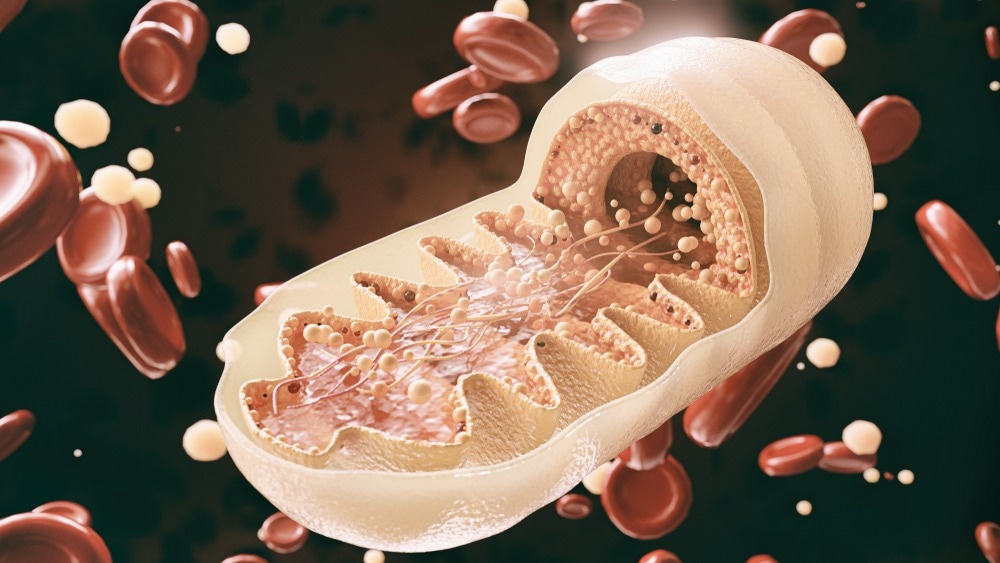In eukaryotic cells, mitochondria produce energy that is used for all cellular functions. Two metabolic pathways that influence energy production include oxidative phosphorylation and glycolysis.
All cells consist of varied numbers of mitochondria, which ranges from several hundred to thousands per cell. Every mitochondrion contains multiple copies of mitochondrial DNA (mtDNA).

Study: Spectrum of sperm mtDNA deletions in men exposed to industrial air pollution. Image Credit: Crevis / Shutterstock.com
Background
The circular DNA of human mitochondria contains 37 genes that encode thirteen proteins, two ribosomal ribonucleic acids (rRNAs), and 32 transfer RNAs (tRNAs). Changes in mtDNA sequences can affect mitochondrial functions that subsequently cause various complex neuromuscular, cardiovascular, gastrointestinal, and neurodegenerative diseases. Alterations in mtDNA can also lead to skin disorders, diabetes, cancer, and aging.
The deletions of genes can cause mtDNA sequences to change and, as a result, have been linked with mitochondrial dysfunctions. The MitoBreak database comprises about 1,300 deletions that affect 3–16,055 base pairs (bp) of the mitochondrial genome.
The majority of these deletions are found within the major arc of mtDNA. Notably, mtDNA abnormalities can cause heteroplasmy.
In sperm, mitochondria can be found surrounding the midpiece of the sperm tail. Within sperm, mitochondria have an important role in sperm motility, capacitation, hyperactivation, and acrosome reaction.
Changes in sperm mtDNA and the mitochondrial membrane have been linked to male infertility. Many common large mtDNA deletions have been reported in men with poor sperm motility. Interestingly, sperm mtDNA status can be used as a molecular biomarker of environmental exposure and oxidative stress.
In the Czech Republic, the Ostrava industrial agglomeration is a highly polluted area that contains a high concentration of industries, local heating, coke oven plants, and transportation systems. During the winter, the transboundary transmission of pollutants from neighboring industrial regions of Poland occurs.
Thus, the air pollution in this area shows seasonal changes with an enhanced circulation of particulate matter and gaseous contaminants, especially benzene and nitrous oxide. As compared to the summer months, the level of air pollution increases in the winter.
Previously, researchers analyzed semen samples obtained from policemen in Ostrava city during both the spring and winter. To this end, an increased mtDNA deletion rate was observed in semen samples collected in the spring, followed by winter.
In a recent Mutation Research/Genetic Toxicology and Environmental Mutagenesis journal study, the same group of researchers compared the length spectra of sperm mtDNA deletions in two seasons with varied air pollution levels.
About the study
The current study is a part of an ongoing Healthy Aging in Industrial Environment (HAIE) project, which primarily focuses on the quality of life in the polluted region of Ostrava city.
A total of 54 healthy and non-smoking city policemen who patrolled the city of Ostrava on foot throughout the year were included in this study. All study participants reported moderate alcohol consumption, no drug abuse, and were not exposed to additional chemical pollutants.
The general and reproductive health data of the participants were collected. During the study period, no drastic changes in lifestyle patterns or diet were observed, which aided in the exclusion of these confounding factors that could have impacted mtDNA. Blood samples were also collected for methylation and gene expression analyses.
Study findings
Higher sperm mtDNA deletion rates and sperm chromatin fragmentation were observed following the winter high-exposure period as compared to the summer season. The sperm analysis showed an increased level of reactive oxygen species (ROS) and oxidative stress that affects sperm chromatin integrity and condensation upon maturation. These also impair sperm mobility and viability, as well as affect mtDNA.
Reverse transcription polymerase chain reaction (RT-PCR) analysis revealed increased sperm mtDNA deletion rates in samples collected during the winter. However, this method failed to compare the length spectra of the mtDNA deletions in the two seasons.
To measure the length range of the sperm mtDNA deletions in specimens of two seasons, PCR primers were used. These primers enabled the scanning of 8,066 bp of the most frequently deleted region of the mtDNA major arc.
A large spectrum of PCR product lengths was observed in the majority of the sperm samples. In all sperm samples, the identified deleted sperm mtDNA molecules were significantly less as compared to undeleted sperm mtDNA. Most of the detected aberrant bands corresponded to PCR products of large deletions covering several kilobases (kb).
Conclusions
The study findings are consistent with previous research revealing that deleted mtDNA (mutated mtDNA) and normal mtDNA coexist in cells in a state of heteroplasmy. The sperm mtDNA deletions typically occur in spermatogonia and primordial cells. Genomic deletions also occur during sperm maturation.
Taken together, the current study found that air pollution did not trigger large and small mtDNA deletions that were detectable by PCR and gel electrophoresis, respectively, in maturing sperm mtDNA.
Journal reference:
- Vozdova, M., Kubickova, S., & Rubes, J. (2022) Spectrum of sperm mtDNA deletions in men exposed to industrial air pollution. Mutation Research/Genetic Toxicology and Environmental Mutagenesis 882. doi:10.1016/j.mrgentox.2022.503538.